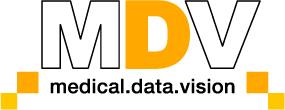
Annual Data Provision Service
Provision of Data for Specific Domains Based on Client Needs
Specific Therapeutic Area
This service offers data limited to specific disease areas. Requests covering multiple disease areas can also be accommodated as needed.
EBM Medical Database
This tool leverages anonymized data collected from medical institutions including DPC and medical claims (receipt) data collected and processed into a large-scale database. It is widely used by pharmaceutical companies, medical device manufacturers, and other healthcare-related businesses for purposes such as marketing research and clinical studies.

Service Overview
For one year from the contract date, clients can access data limited to specific domains selected from MDV's available dataset.
Data can be used company-wide for purposes such as marketing, research, and development. Delivery is provided in text or CSV format.
Examples of Extracted Data
- Malignant Tumor
- Diabetes
- Kidney Disease
- Patients Receiving Cardiac Therapeutics
- Patients Undergoing Joint Replacement Surgery
Multiple disease areas can be combined.
Drugs or medical procedures can also be designated as specific domains.
Data Provided
Disease Data
All disease-related data maintained by our company is delivered in a disease name table.
The data is updated monthly and covers the period from April 2008 to the most recent month.
Prescription Data
All prescription data maintained by our company will be delivered in a prescription table.
This includes details such as dose and number of prescription days.
Medical Procedure Data
All medical procedure data maintained by our company will be delivered in a medical procedure table.
This includes information such as the number of procedures and associated costs.
Blood Test Data
All blood test data maintained by our company will be delivered in a laboratory test value table.
This includes numerical results, units, and other related data.
Data Table Overview
We will deliver data extracted in accordance with our standard data format.
Data is broadly divided into three main tables: the Disease Name Table, the Medical Procedure Table, and the Test Value Table.

Before Using the Data
Purpose Clarification
After discussing your intended research use for the dataset, we'll recommend a suitable patient cohort for extraction based on your study objectives.

Definition Review
You'll have the opportunity to review the proposed dataset specifications, including patient cohort definitions, tables, and data columns.

Contract
Following quotation approval, a signed contract will be necessary. We’ll submit an initial draft for your consideration.

Delivery
Given the expected size of the dataset, we plan to deliver the files via the cloud.




